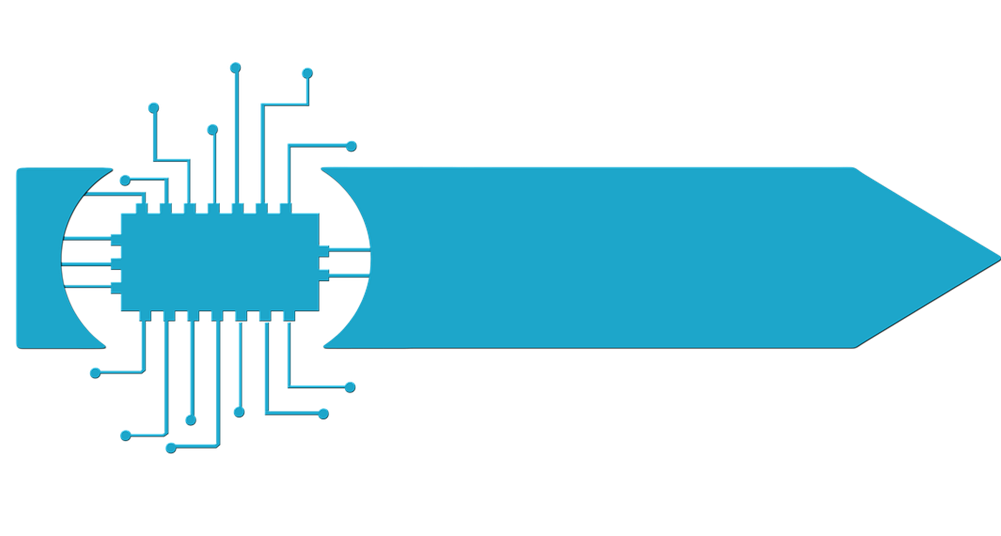
This is an exciting time to be involved with the semiconductor industry. In the coming years, as connected technologies become more sophisticated and widespread, semiconductors will be right there with us, making these leaps in productivity and convenience possible.
But apart from simply becoming more indispensable in the tech world, the semiconductor industry will have to do some innovating of its own.
Why Semiconductors, and Why Now?
Where the semiconductor industry is concerned, the immediate effects of the IoT’s growing popularity are quite positive. To understand why, we need at least a partial list of industries expected to adopt IoT technologies in a significant way:
- Automotive and Insurance: Smart driverless cars will require connectivity and sensor technology, which means semiconductors. Even insurance companies are using sensors — to collect data on safe driving habits, for example.
- Medical Devices and Health Care: Smartwatches get smarter all the time, and so do the connected medical devices in hospitals, such as blood pressure cuffs, EKG machines, cameras, communication devices and more.
- Fabrication and Manufacturing: Connected assembly and machining equipment can alert operators when parts require servicing. Semiconductors also facilitate connectivity for building infrastructure, such as automatic lights, temperature control and automated security systems.
These are just three industries worth mentioning — but the IoT is going to be everywhere. According to research from Gartner, total spending on IoT technology reached $235 billion in 2016. This was driven by service-based spending in the professional sector, which means businesses were contracting with outside firms to design and deploy the infrastructure required to support new connected machines and devices.
The same research says that, worldwide, we can expect to see more than 20 million connected devices come online between now and 2020.
For consumers, IoT devices provide a degree of convenience, comfort and energy-efficiency that wasn’t possible before. All of this is true of the IIoT, too, with the addition of cost savings thanks to improved product throughput, insights into resource usage, better production forecasting and planning tools, better route optimization for deliveries and much more.
Semiconductors power all of this. Each connected IoT or IIoT device contains sophisticated microchip designs that allow even low-energy devices to achieve remote connectivity.
And because the IoT is so clearly poised for growth, it means the semiconductor industry is, too. But that growth isn’t going to look like what we’ve seen so far.
With Waning Smartphone Sales, What’s Picking Up the Slack?
The year 2017 was extremely strong for semiconductor makers. Buoyed by demand for memory modules on mobile devices and computers, the industry reached a value of $420.4 billion USD, for a 21.6 percent increase over 2016.
Despite these positive signs, some wonder whether semiconductors can sustain their growth now that smartphone and computer sales don’t provide the same reliable growth they once did.
The explosion of potential in the industrial IoT market comes at an ideal time. The mandate today is less about developing custom silicon for smartphones and more about helping businesses roll out “distributed computing power” throughout their facilities and operations.
In other words, since it’s cheap enough to put computational power and connectivity in just about any physical product these days — from smartphones and televisions to wristwatches, children’s toys and gym shorts — semiconductors will need to diversity their product offerings to adjust to a world where ubiquitous computing is the norm.
Chip Makers and Attempts at Diversification
Interestingly, this marks a kind of inflection point. Whereas device manufacturers were once hamstrung by progress and innovation among chip makers, it now seems as though it’s device manufacturers who are dictating the terms of the conversation and steering the course of the microchip industry.
Consider how semiconductor companies are changing their approach as the winds began to shift. Qorvo and Skyworks, which used to rely on revenue from manufacturing chips for smartphones, now earn as much as one-third of their revenue from developing business- and defense-focused connectivity technology.
Elsewhere, semiconductor companies are attempting mergers in the name of diversification in a post-smartphone world. Some are less successful than others, as was the case in the proposed merger between Qualcomm and NXP. What would have been the largest-ever deal of its kind ultimately fell through because the Chinese government had antitrust concerns. The deal would have lengthened Qualcomm’s reach into the IoT and automotive sectors.
Ultimately, there seems to be a right and a wrong way for semiconductor manufacturers to navigate their now-uncertain future. The arrival of the age of “peak smartphone” revealed how many chip companies unwisely placed all of their eggs in this single basket. And some of these companies, having realized they became too big for their own good, sought to become bigger still by pursuing mergers.
Real product innovation, rather than shuffling balancesheets around, will determine which chip makers survive. For example: while semiconductors have always been able to stand up to high temperatures, the current and future requirements of mobile technology will demand even more rugged performance out of our microchips and even more thoughtful designs from the companies building them.
The Internet of Things and the microchip are evolving in tandem now — and it’s unlocking untold potential that companies can capitalize on. Computing and information flow can truly happen anywhere now. And in that kind of world, it’s companies with genuine creativity that will stand the test of time.
Edited by
Ken Briodagh





